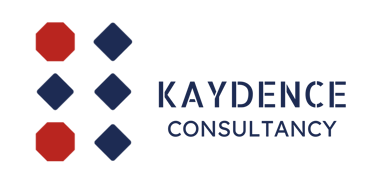Kaydence partners with the CSH to drive innovative solutions in education and healthcare.
Cybersecurity in the Digital Age: Protecting Your Online Identity
In an era where digital interactions dominate daily life, protecting your online identity has never been more critical. Cyber threats such as hacking, identity theft, phishing scams, and data breaches are on the rise, putting personal and financial information at risk. This blog explores the evolving landscape of cybersecurity, common online threats, and practical steps to safeguard your digital presence. From using strong passwords and enabling two-factor authentication to recognizing phishing attempts and securing financial transactions, learn how to stay safe in the ever-changing digital world.
RESEARCH
2/7/20253 min read


In today’s interconnected world, our digital presence is more significant than ever. From social media to online banking, we rely heavily on the internet for daily activities. However, this increased connectivity also exposes us to cyber threats such as hacking, identity theft, phishing scams, and data breaches. Protecting your online identity has never been more crucial. In this blog, we’ll explore key cybersecurity threats, best practices to safeguard your digital presence, and steps to maintain online privacy.
1. Understanding Cybersecurity Threats
Cybercriminals are constantly evolving their tactics to exploit vulnerabilities. Here are some of the most common cybersecurity threats:
a) Phishing Attacks
Cybercriminals send fraudulent emails or messages that appear to be from trusted sources, tricking users into providing personal information, passwords, or financial details.
b) Identity Theft
Hackers steal personal information such as Social Security numbers, Aadhaar details, or credit card information to commit fraud or financial crimes.
c) Malware and Ransomware
Malicious software can infiltrate devices, steal data, or lock access until a ransom is paid.
d) Data Breaches
Large-scale cyberattacks compromise personal and financial data stored by companies, exposing sensitive information.
e) Social Engineering
Attackers manipulate individuals into revealing confidential details by pretending to be trusted contacts or organizations.
2. Best Practices for Online Security
To protect your online identity, adopt these cybersecurity best practices:
a) Use Strong and Unique Passwords
Avoid using common passwords like “123456” or “password.”
Create a complex password with a mix of uppercase, lowercase, numbers, and symbols.
Use a password manager to securely store and manage your credentials.
b) Enable Two-Factor Authentication (2FA)
2FA adds an extra layer of security by requiring a second form of verification (such as a code sent to your phone).
Enable 2FA on accounts like banking, email, and social media for enhanced security.
c) Be Cautious with Emails and Links
Never click on suspicious links or download attachments from unknown sources.
Verify the sender’s email address before responding to requests for sensitive information.
d) Regularly Update Software and Devices
Keep operating systems, browsers, and applications updated to patch security vulnerabilities.
Enable automatic updates to ensure timely security patches.
e) Use Secure Networks
Avoid using public Wi-Fi for financial transactions or accessing sensitive accounts.
Use a VPN (Virtual Private Network) for encrypted browsing, especially on public networks.
f) Monitor Your Digital Footprint
Regularly review your social media privacy settings.
Avoid sharing excessive personal information online.
3. Protecting Financial and Personal Data
a) Secure Online Transactions
Always use HTTPS-secured websites for payments and banking transactions.
Never save card details on websites or apps unless necessary.
b) Regularly Check Bank Statements and Credit Reports
Monitor financial statements for any unauthorized transactions.
Report any suspicious activity immediately to your bank or credit provider.
c) Use Encrypted Messaging Apps
Prefer end-to-end encrypted communication platforms like Signal, Telegram, or WhatsApp to keep conversations private.
4. Safe Social Media Practices
a) Limit Public Information
Avoid sharing details like your birthdate, phone number, or location publicly.
Be mindful of what you post online, as hackers can use personal details for security questions or password recovery.
b) Be Aware of Fake Profiles and Scams
Do not accept friend requests from unknown accounts.
Be cautious of direct messages asking for personal or financial details.
c) Adjust Privacy Settings
Regularly update privacy settings on platforms like Facebook, Instagram, and LinkedIn to control who can see your information.
5. Cybersecurity for Businesses and Professionals
a) Secure Work Devices and Accounts
Use enterprise-grade security software on company devices.
Avoid logging into work accounts from unsecured or personal devices.
b) Educate Employees on Cyber Threats
Conduct regular cybersecurity training for employees.
Implement access control measures to restrict sensitive data access.
c) Backup Data Regularly
Store important business data securely in encrypted cloud storage or offline backups.
6. The Future of Cybersecurity
With the rise of AI, blockchain, and quantum computing, cybersecurity is evolving rapidly. Future security trends include:
AI-driven threat detection to prevent cyberattacks in real-time.
Biometric authentication replacing traditional passwords.
Blockchain technology for secure financial transactions.
Stronger data protection laws to safeguard personal information.
As technology advances, staying informed and proactive about cybersecurity will be essential for protecting online identities.
Conclusion
In the digital age, cybersecurity is not optional—it’s a necessity. By adopting strong security measures, staying aware of emerging threats, and regularly updating online safety practices, you can protect your personal and financial information from cybercriminals.
🔒 How do you safeguard your online identity? Share your cybersecurity tips in the comments below! 🚀
Kaydence Consultancy
Global platform for study abroad solutions, marketing strategy and your efficient research partner
Contact
Get in touch
director@kaydenceconsultancy.com
+9188916082
© 2025 Kaydence Consultancy. All rights reserved.
Designed with care | Powered by Innovation
Navigation
Company
Career
Legal
M G Road, Kochi, Kerala, India
